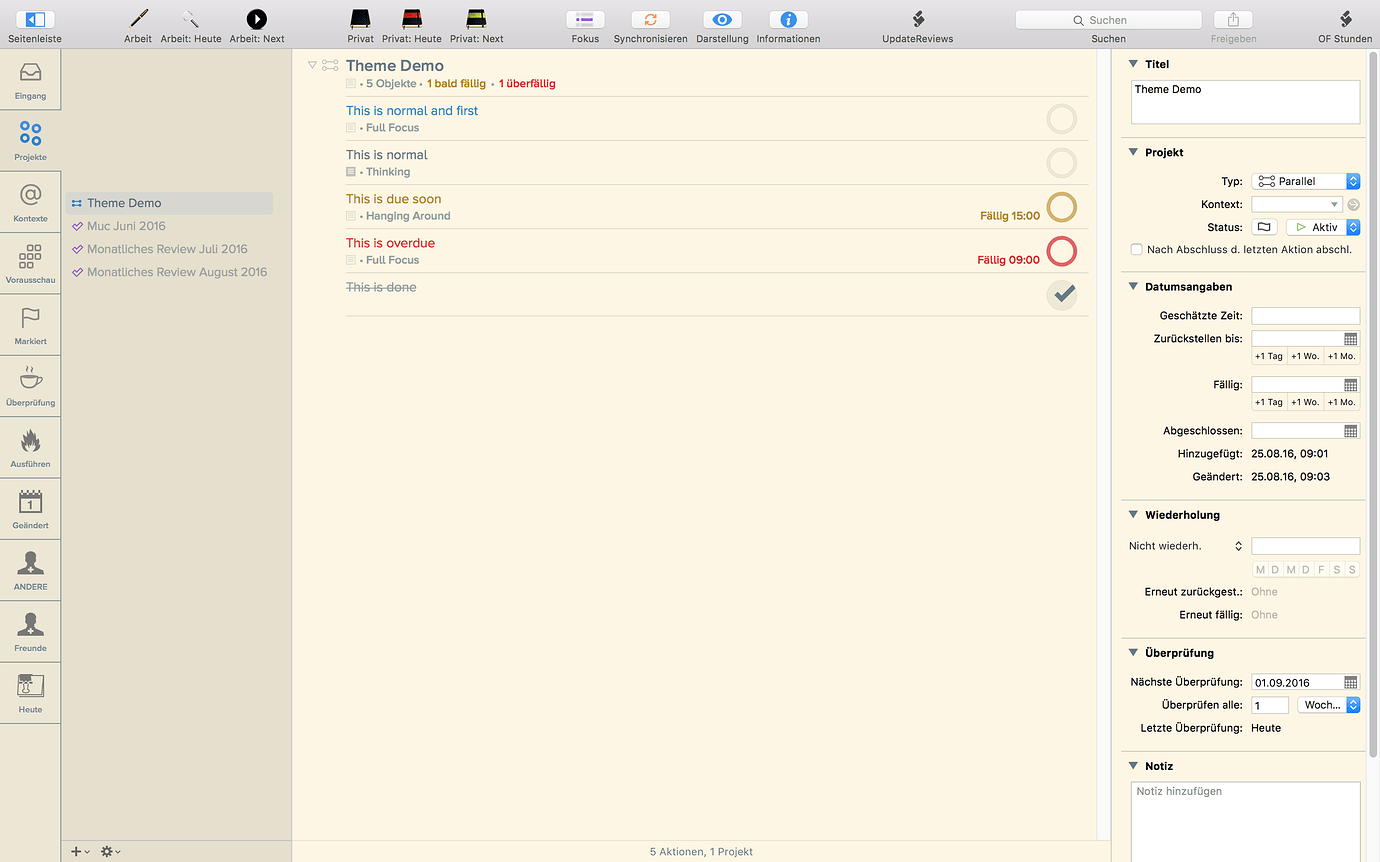
When you mark a task complete in OmniFocus, the only thing that's actually recorded is the completion date.

OmniFocus does have a "Notes" field associated with each task, but it's basically just a small textview - not really anything you would want to type in or view a sizable amount of text with. There are a few standard approaches to solving this limitation.
#Omnifocus 2 themes free
But in early 2019, when I found myself with a bunch of free time on my hands, I took a week to reevaluate all of the systems, inboxes, apps, and habits I use to get life done. And by and large that worked really, really well.

Originally, and for nearly a decade, all of those checklists lived inside OmniFocus as recurring projects. This is also another fairly involved process that I can't easily automate, so I have to do it by hand. If I forget, or if I mess up, my customers won't be able to get their work done.
#Omnifocus 2 themes update
#Omnifocus 2 themes software
(Enterprise software sales is ridiculous.) And I'll be damned, but the research showed that medical facilities using our software reported a statistical decrease in operating room screwups. The software I helped build aimed to solve this problem by being a glorified, cloud-synced checklist that hospitals could buy for tens of thousands of dollars per license. It's the 21st century you'd think the medical industry would have fixed that problem by now, right? But even after verbally confirming with the patient before surgery, and then even after marking the incision site with a Sharpie, doctors still occasionally operate on the wrong part of the body. Years ago, I worked on a piece of medical software that was designed to ensure surgeons operated on the correct side and limb of the patient's body. And you have to trust your system (paper, digital, whatever) enough so that all those open loops in your head fall away and you can just let go and go about your life confidently. You have to train yourself to be diligent enough that putting everything into your system becomes habit.

And that's exactly what I mean when I say "letting go" above. And now, looking back, I can see that it was probably 2010 - six years in! - before I became truly comfortable with letting go before that whole mind like water state of flow finally became second nature.įor me, and I guess most people doing the GTD thing, getting to that point meant fully trusting your system. And here we are in 2020, which means I've been practicing this methodology (with varying levels of success) for over fifteen years. I jumped on the Gettings Things Done bandwagon around 2004 I think - the first of my two senior years in college. I'm a firm believer in the whole mind like water spiel that David Allen preaches through GTD.


 0 kommentar(er)
0 kommentar(er)
